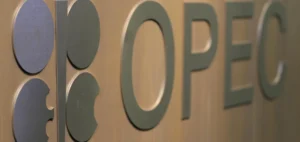The Middle Eastern country of Yemen is attracting attention for its potential impact on world oil markets. Analysts have warned that if peace talks with Iran-backed Houthi militiamen in Yemen fail, it could lead to disruptions in the region’s oil supply.
The Geopolitical Significance of Yemen
Yemen-based Houthi militiamen have been responsible for a series of attacks on transport and energy infrastructure in the Middle East since 2017, with a particular focus on Saudi Arabia. According to the Platts Energy Security Sentinel project, these attacks, launched mainly from Yemen, have accounted for 38% of all recorded incidents over the past six years.
Escalating conflict in the Middle East
Before the current escalation of the conflict in Gaza, there was optimism about the prospects for peace in Yemen. This optimism followed eight years of fighting between a coalition backed by Saudi Arabia and the United Arab Emirates and the Iranian-armed and financed Houthi rebels.
One of the major incidents involved attacks on Saudi Arabia’s energy infrastructure, notably Saudi Aramco’s Jazan refinery on the border with Yemen. These attacks, presumed to have originated in Yemen, led to a rise in crude oil prices. For example, in 2019, Platts Dubai, the main benchmark for Gulf crudes, recorded an increase of $9.22/b to reach $67.55/b on the day of the attacks.
Jim Burkhard, Vice President and Head of Oil Market Research at S&P Global Commodity Insights, highlighted the risk of further escalation. He mentioned that if hostilities continue to escalate in the Middle East, the Houthis could target ships in the region, impacting cargo flows. The outcome depends on Iran’s actions and the United States’ response.
Marine Risks
There are already signs that the conflict is involving militiamen from Yemen, raising concerns about shipping and the flow of goods through the Bab el-Mandeb strait. Recent events, including the interception of drones and missiles by a US warship and the Yemeni Prime Minister’s warnings about targeting Israeli ships, have raised concerns.
While increased maritime risks may have an impact on freight rates in the region, market participants note that the tanker market is primarily influenced by supply and demand fundamentals.
Jakob P. Larsen, Head of Maritime Safety and Security at BIMCO, highlighted the various options available to the Houthis to threaten ships in the Southern Red Sea, including anti-ship missiles, unmanned explosive boats and aerial vehicles (drones).
Yemen’s oil and gas resources
Yemen has significant oil and natural gas resources, but oil production has declined due to under-investment, aging fields and civil war. Oil used to account for a substantial share of government revenues, but this has changed in recent years.
Peace talks in Yemen have been hampered by disagreements over oil revenues. The Houthi rebels are demanding a share of these revenues to pay salaries, which is complicating negotiations.
Last October, the conflict affected the country’s oil terminals and exports. In addition, there were clashes over the fate of 1.1 million barrels of oil extracted from FSO Safer in Yemen by a UN team in August.
Overall, Yemen’s role on world oil markets is significant, and the ongoing conflict in the Middle East raises concerns about its potential impact on energy security.
As conflicts escalate in the Middle East, Yemen’s role on world oil markets becomes increasingly crucial. The stability of the region’s oil transport and energy infrastructure is at stake, and the world is keeping a close eye on these geopolitical developments.






















